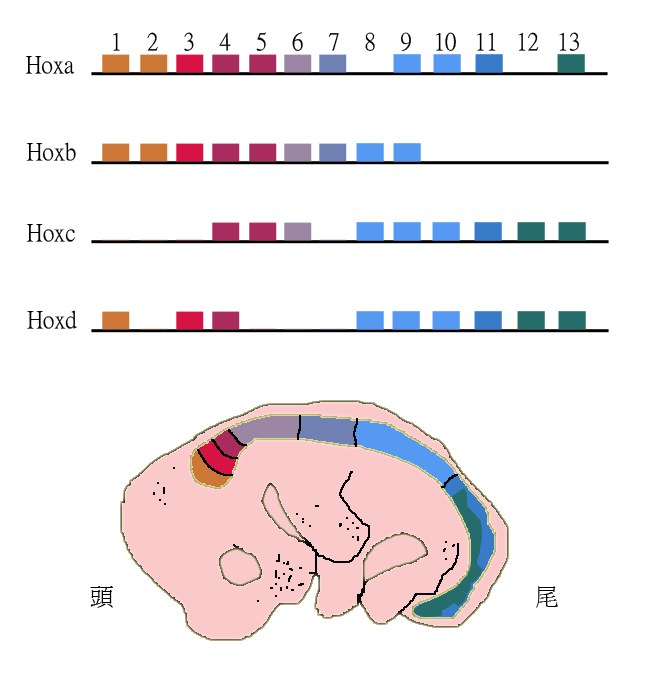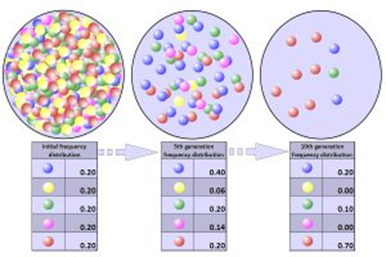Contents
Genetics and Evolution
Cellular Control
Mutations
A mutation is a change in the DNA and this could result in a non-functioning protein being created. However, some mutations result in the creation of a protein that provides an advantage to an organism. All alleles of genes are a result of a mutation.
Gene Mutations
A mutation in a gene is a change in the base sequence of the DNA. Gene mutations randomly occur during DNA replication. These random mutations are more likely to occur if you are exposed to mutagenic agents, which can interfere with DNA replication. These include high energy radiation (UV light), ionizing radiation (Gamma rays and X rays) and chemicals (carcinogens such as mustard gas and cigarette smoke).
Because mutations alter the gene, they can result in a different amino acid sequence in the encoded polypeptide. If the amino acid sequence changes, then when the protein is modified into the tertiary structure, it will form hydrogen and ionic bonds in different places and fold differently. This will result in a different 3D shape, and therefore a non-functioning protein could be made. Not all mutations are harmful though. Sometimes the new protein that is made may be beneficial, such as the mutation that resulted in antibiotic resistance in bacteria. Some mutations are neutral, meaning that despite the change in DNA, the same protein is still made.
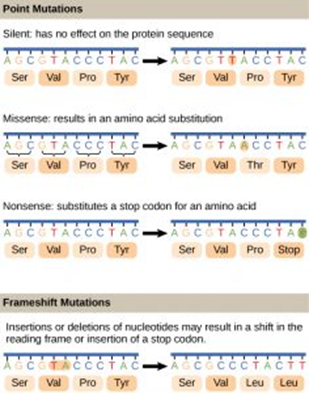
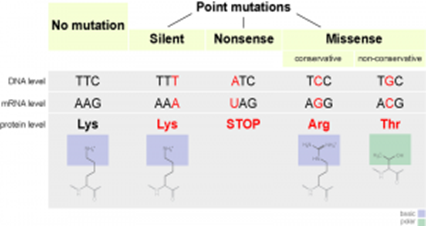
A gene mutation could result in either a base being deleted or substituted for a different one e.g.:
TAC CCA AGT GGC - original DNA sequence
TAC ACA AGT GGC - base substitution mutation
TAC CAA GTG GC - base deletion mutation
A base substitution may be ‘silent’, meaning that the new codon still codes for the same amino acid. This is because the genetic code is degenerate (multiple codons can code for the same amino acid). Base deletions result in a frameshift. Removal of one base changes all of the subsequent codons, as can be seen above, which is more harmful as multiple amino acids may be incorrectly coded for.
Addition
One extra base being added to the sequence:
Original: TAC TTC AGG TGG
Mutation: TAC ATT CAG GTG G
The impact of adding one base is that all subsequent codons are altered. This is known as a frameshift. This type of mutation can be very harmful because all the altered codons could potentially code for different amino acids and result in a very different sequence of amino acids resulting in a non-functioning protein.
Deletion
The deletion of a base in a sequence.
Original: TAC TTC AGG TGG
Mutation: TAC TCA GGT GG
This causes a frameshift to the left. This could result in a different polypeptide chain and a non-functioning protein.
Substitution
One base has been changed for a different base, but the number of bases remains the same and there is no frameshift. This results in only one codon changing, and due to the genetic code being degenerate, it may still code for the same amino acid and therefore have no impact.
Original: TAC TTC AGG TGG
Mutation: TAC ATC AGG TGG
High Energy and Ionizing Radiation
These mutagenic agents include radiation such as α and β particles and x-ray and gamma rays. Ultraviolet light is not ionizing, but it is still high enough to cause damage and disrupt the structure of DNA.
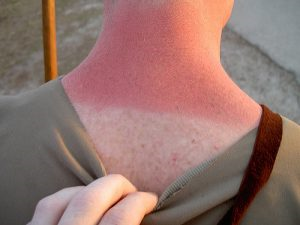
Carcinogens
This is the term given to chemicals that can alter the structure of DNA and interfere with transcription. These include chemicals in tobacco smoke, mustard gas, and peroxides.

Control of Transcription
In eukaryotes, transcription of target genes can be stimulated or inhibited when specific transcriptional factors move from the cytoplasm into the nucleus. Turning on/off particular genes in a cell is what enables them to become specialized. In prokaryotes, the function is more to preserve resources, to ensure that not all proteins are being constantly produced.
The lac operon is found in E. coli and it is a sequence of 3 genes that collectively aid with lactose digestion. Bacteria require less energy to digest glucose, so this is favorable, but if it is not present then it will digest lactose. Therefore, the proteins produced by the lac operon are only needed if glucose is absent and lactose is present. This is how the transcription of these genes is regulated to match this demand.
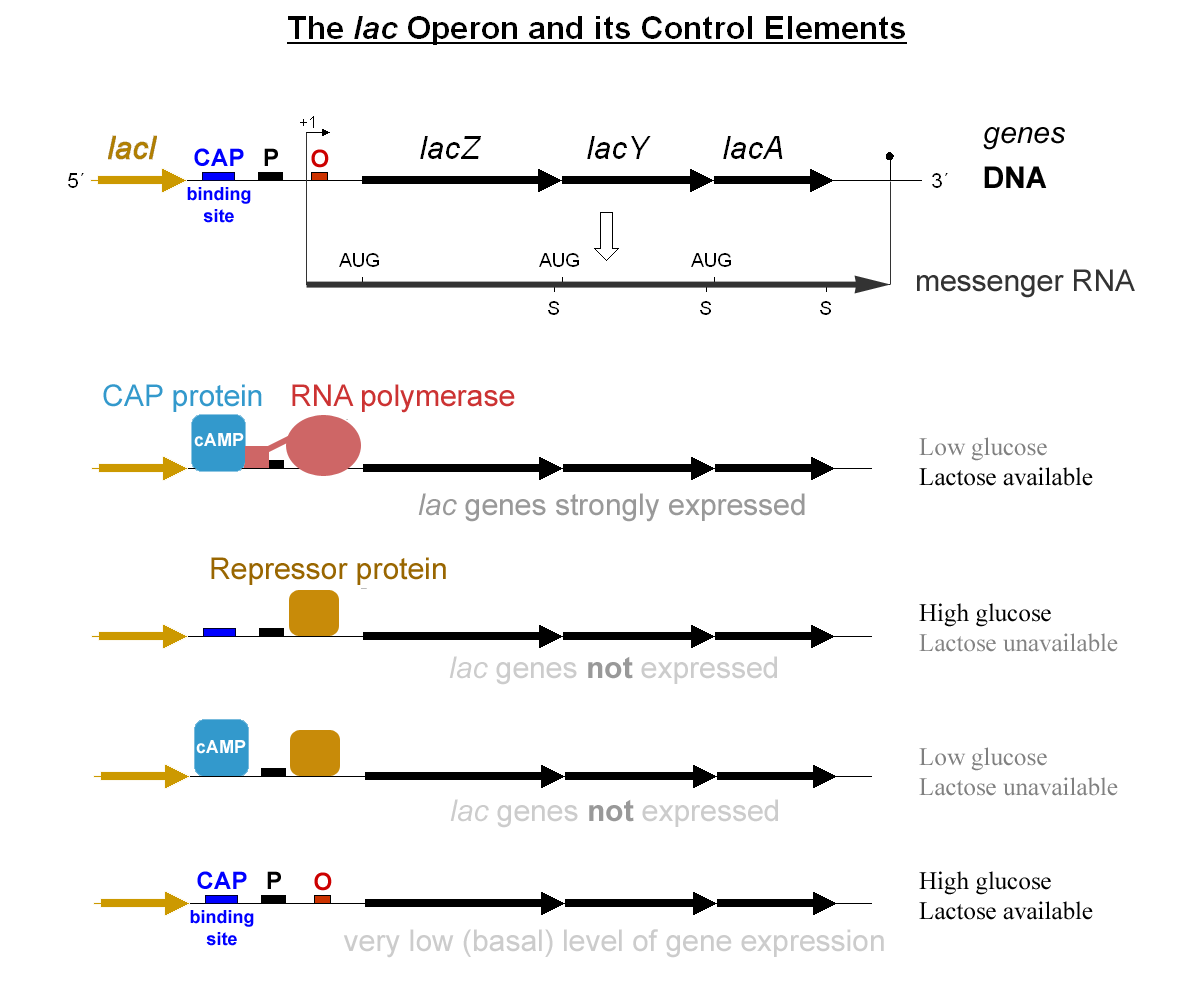
There are two molecules that can turn the operon on and off. Firstly, the lac repressor and secondly, the catabolite activator protein (CAP).
The lac repressor (shown as an orange square on the diagram) is able to sense if lactose is present. It is able to do this through the isomer allolactose. This molecule is usually bound to the operon to prevent transcription, but the lac repressor detaches when lactose is present so that transcription can occur. Lactose is present normally blocks transcription of the operon but stops acting as a repressor when lactose is present.
Catabolite activator protein (CAP) is able to sense the presence of glucose. When glucose levels are low, it will initiate transcription of the lac operon. CAP is able to sense glucose through the molecule cAMP.
Transcriptional Factors
Transcription of a gene will only occur when a molecule from the cytoplasm enters the nucleus and binds to the DNA in the nucleus. These are called transcription factors, and each one can bind to different base sequences on DNA, and therefore initiate transcription of genes. Once bound, transcription begins, creating the mRNA molecule for that gene which can then be translated in the cytoplasm to create the protein. Without the binding of a transcription factor, the gene is inactive, and the protein won’t be made.
Oestrogen
Oestrogen is a steroid hormone that can initiate transcription. It does this by binding to a receptor site of a transcriptional factor. When it binds to the transcriptional factor, it causes it to change shape slightly, and this change in shape makes it complementary and able to bind to the DNA to initiate transcription.
Epigenetics
Epigenetics is how the environment interacts with the genome. Factors such as diet, stress, and toxins can add chemical tags to the DNA, and this can control gene expression in eukaryotes. In this way, epigenetics involves heritable changes in gene function, without changes to the base sequence of DNA. Epigenetic inheritance, as well as DNA inheritance, takes place. The layer of chemical tags on the DNA is called the epigenome, and this impacts the shape of the DNA-histone complex and whether the DNA is tightly wound so won’t be expressed or unwound so it will be expressed. If the DNA is tightly wound, then transcription factors cannot bind. Therefore, the epigenome, which is due to changes in the environment, can inhibit transcription.
Post-Transcriptional Changes
mRNA modification
The newly synthesized strand of mRNA is called pre-mRNA before it has been modified. The key modifications are the removal of the introns and protective caps added to protect the mRNA against degrading enzymes in the cytoplasm.
To provide protection, the pre-mRNA has a 5’ cap added. This is a protective cap added to the 5’ end of mRNA. At the 3’ end, a poly A tail is added. This is several adenine RNA nucleotides. Both of these modifications protect both ends of the mRNA from being hydrolyzed by endonuclease enzymes.
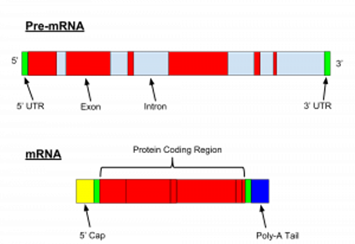
The second modification is the removal of the ‘junk DNA’ or introns. These are removed by a protein called a spliceosome, therefore the removal is called splicing.

The mRNA is spliced in many different ways, allowing a single gene to actually result in the creation of multiple proteins. This process is called alternative splicing. Humans have approximately 23,000 genes, but at least 90,000, so the creation of these extra proteins via alternative splicing of the introns is why the introns are important.
After translation, some proteins need to be activated by other molecules. Cyclic AMP is a molecule that can bind to certain enzymes, protein kinases, which then activates them to catalyze reaction. This is seen in the second messenger model for glucose regulation.
Homeobox Gene Sequence and Hox Genes
Plant, animals, and fungi all have homeobox gene sequences to control the development of their body. These are sequences of genes that regulate the expression of other genes that are involved in the formation of the body in the early stages of development as an embryo. Hox genes are a type of homeobox gene found in metazoan.
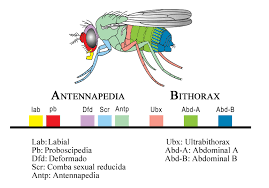
Mitosis and apoptosis, programmed self-cell death, are important in the control of body form. The cell cycle can also be controlled by genes to ensure new cells are only made when they are needed for growth and repair to preserve energy and prevent tumor formation. The tumor suppressor gene is responsible for making proteins that stop the cell cycle continuing and proto-oncogenes are responsible for producing proteins that initiate the cell cycle. If an error is detected in a cell or if it is too old to function, apoptosis occurs, and this cell is destroyed and the resources are recycled. The control of mitosis and apoptosis are both in response to internal and external stimuli, such as stress.
Genetic Variation
The exact mechanisms of how genetic variation is introduced to a population through mutations and meiosis is introduced in topic 4. The first source of genetic variation is mutations, but meiosis and the random fertilization of gametes during sexual reproduction result in more genetic variation.
Within a population, there will be competition for resources, the impact of disease and predators results which results in the process of natural selection.
Natural selection is when individuals within a population show a wide range of variation in phenotype. This is due to genetic and environmental factors. The primary source of genetic variation is mutation. Predation, disease, and competition result in selection pressures. Those organisms with phenotypes providing selective advantages are likely to survive. They are also likely to produce more offspring and pass on their favorable alleles to the next generation. The effect of this is a change in the allele frequency (evolution).
Artificial selection is when humans select plants or animals with favorable characteristics and deliberately breed these individuals together. This manipulates the gene pool so that the favorable allele becomes more common and less favorable alleles become less common. This was particularly prevalent in creating dog breeds with popular features, for example pugs. Pugs were bred to have features deemed cute, such as the flat squashed face. The ethical issue with this is that, due to these selected features, pugs have many medical issues linked to breathing due to their flat nose structure.
Individuals within a population that have a phenotype that makes them more able to survive and pass on their alleles to their offspring are described as having the selective advantage. This is differential reproductive success, as not all individuals are as likely to reproduce, and this results in changes in allele frequencies within a gene pool. Evolution is the term given to the change in the allele frequencies in a population.
Below is a recap of the impact directional and stabilizing selection have on the allele frequency.
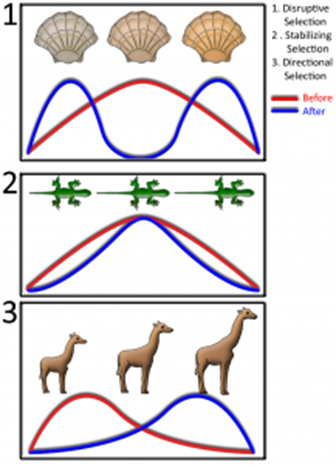
The final type of selection is disruptive selection. This is when individuals which contain the alleles coding for either extreme trait are more likely to survive and pass on their alleles. As a result, the allele frequency changes and more individuals possess the allele for the extreme trait and the middling trait allele becomes less frequent. Continued disruptive selection can ultimately lead to speciation.
Patterns of Inheritance
Inheritance Key Terms
- Genotype – The genetic constitution of an organism (the alleles it has for a gene).
- Phenotype – The expression of the genes and its interaction with the environment.
- Homozygous - A pair of homologous chromosomes carrying the same alleles for a single gene.
- Heterozygous – A pair of homologous chromosomes carrying two different alleles for a single gene.
- Recessive allele – An allele only expressed if no dominant allele is present.
- Dominant allele – An allele that will always be expressed in the phenotype.
- Codominant – Both alleles are equally dominant and expressed in the phenotype.
- Multiple Alleles – More than two alleles for a single gene.
- Sex-linkage – A gene whose locus is on the X chromosome.
- Autosomal Linkage – Genes that are located on the same chromosome (not the sex-chromosomes).
- Epistasis – When one gene modifies or masks the expression of a different gene at a different locus.
- Monohybrid – Genetic inheritance cross of a characteristic determined by one gene.
- Dihybrid – Genetic Inheritance cross for a characteristic determined by two genes.
Inheritance Crosses and Examples
Test Cross
A test cross can be used to determine whether an organism displaying a dominant characteristic is due to a homozygous dominant or heterozygous genotype. To determine the genotype, the organism in question is crossed with a member of its own species that is homozygous recessive for that trait. The offspring’s phenotypes are then analyzed. If any of the offspring have the homozygous recessive trait, then the original parent in question must have been heterozygous for the dominant trait.
Dihybrid
Below is an example of a genetic cross showing the inheritance of two genes at the same time.
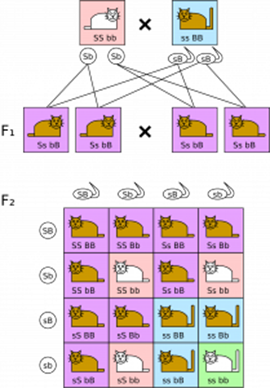
Codominance and Multiple Alleles
Blood groups are examples of both codominance and multiple alleles. The blood group phenotype can be A, B, AB, or O. These letters refer to the specific protein, or antigen, found on the surface of red blood cells. While only one gene codes for this phenotype, there are three different alleles (multiple alleles) at play. Allele IA codes for the A antigen and is dominant. Allele IB codes for the B antigen and is also dominant. Allele IO codes for no antigen and is recessive. Since both allele IA and IB are dominant, they are both expressed, resulting in the AB phenotype, which is an example of codominance.
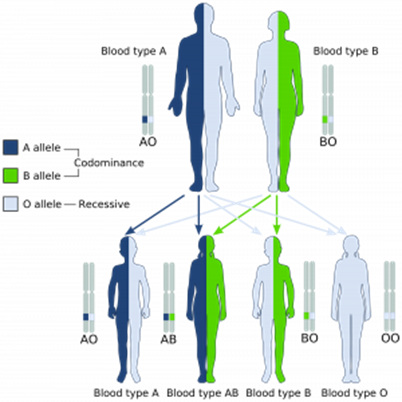
Sex-Linked Inheritance
The X chromosome is significantly larger than the Y chromosome, containing a much larger non-homologous region that harbors many non-sex-determining genes. Examples of genes linked to haemophilia, Duchenne muscular dystrophy, and red-green colorblindness can be found on these chromosomes.
Autosomal Linkage Inheritance
In humans, there are 23 pairs of chromosomes, each carrying various genes. Autosomal linkage studies the inheritance of two genes located on the same chromosome, excluding the X and/or Y chromosome (the term autosomal refers to the non-sex-determining chromosomes). In this type of inheritance, assuming that crossing over did not occur to alter the gene's locus, genes located on the same chromosome cannot segregate independently and must be inherited together.
Epistasis
Epistasis occurs when one gene masks the expression of another gene. Coat color in Labrador retrievers serves as an example of epistasis. Two genes control coat color, with one gene determining pigment production (Allele E for pigment produced and e for no pigment produced), and the other gene influencing pigment concentration (Allele B for high concentration and b for lower concentration).
Gene 1 can mask the expression of gene 2 when the alleles inherited are e, coding for no pigment production.
| Phenotype | Genotypes | Explanation | ||
| Yellow Labrador | eebb | eeBB | eeBb | Gene 1 is homozygous recessive, preventing pigment production and masking the effect of gene 2. |
| Chocolate Labrador | Eebb | EEbb | Gene 1 codes for pigment production, so at least one dominant E allele is required. The second gene must be homozygous recessive to produce brown color. | |
| Black Labrador | EeBb | EEBb | EEBB | Gene 1 codes for pigment production, so at least one dominant E allele is required. For a Labrador to be black, the second gene's genotype must contain at least one dominant B allele. |
The Hardy–Weinberg Principle
This is a mathematical model used to predict allele frequencies within a population. It assumes that there will be no changes in allele frequencies between generations within a population (e.g., no deaths, births, or migration), making it an imperfect model.
The frequency of alleles, genotypes, and phenotypes in a population can be calculated using the Hardy–Weinberg equation:
p^2 + 2pq + q^2 = 1
This equation should be used in conjunction with the following equation to determine p or q first, which can then be used in the above equation:
p + q = 1
Where:
p = the frequency of one (usually the dominant) allele
q = the frequency of the other (usually recessive) allele of the gene
p^2 = The frequency of the homozygous dominant genotype
2pq = The frequency of the heterozygous genotype
q^2 = The frequency of the homozygous recessive genotype
Chi-Squared Statistic in Inheritance
All the types of genetic inheritance mentioned above can be used to estimate the expected frequency of each phenotype/genotype in specific parent combinations. The chi-squared test can determine whether the expected phenotype or genotype ratios significantly differ from the observed ratios.
- Two parents had three children. Two of the children had blood group AB, and one child had blood type O. Determine the genotypes of the parents.
- Your answer should include: IAIO / IBIO
- Red-green color blindness is a sex-linked recessive condition. Calculate the probability of a non-red-green color blind male and a color-blind mother having a child with the condition.
- Your answer should include: 50 / 50% / half / 1/2
- What are all the possible genotypes for blood groups?
- Your answer should include: IAIO / IAIA / IBIB / IBIO / IAIB / IOIO
- What does epistasis mean?
- Your answer should include: Gene / Masks / Interacts
- How does autosomal linkage differ from sex linkage?
- Your answer should include: Somatic / Chromosomes / X / Y
Speciation
Speciation is the process that results in the creation of new species. This occurs when one original population of the same species becomes reproductively isolated. Reproductive isolation means that there are now two populations of the same species, but they cannot interbreed. This can lead to the accumulation of genetic differences in their gene pools to the extent that the two populations are unable to produce fertile offspring and are thus classified as two different species. Reproductive isolation can occur either geographically (allopatric speciation) or due to changes in reproductive mechanisms (sympatric speciation).
Allopatric Speciation
Populations can become geographically separated, leading to reproductive isolation. Within all populations, genetic variation arises due to random mutations. Over time, a population may become geographically isolated due to the formation of new mountain ranges or bodies of water that separate land masses, for example. This separation prevents the original population from interbreeding due to the geographical barrier. Both separated populations will continue to accumulate different beneficial mutations over time to adapt to their respective environments. Due to the accumulation of genetic differences, the two populations become so genetically distinct that they can no longer reproduce to produce fertile offspring, leading to their classification as two different species.
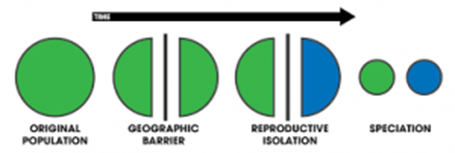
Sympatric Speciation
Populations can also become reproductively isolated due to differences in behavior. Individuals of the same species may not be separated by geographical barriers but are still unable to reproduce together. This could be due to a random mutation within the population affecting reproductive behavior, such as causing individuals to perform different courtship rituals or be fertile at different times of the year. Consequently, these individuals will not interbreed, and there will be no gene flow between the two groups within the population. Over time, these reproductively isolated populations will accumulate different mutations to the point where their DNA is so distinct that they cannot reproduce to produce fertile offspring, classifying them as two different species.
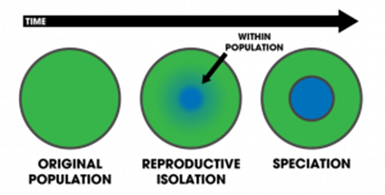
Genetic Drift
Genetic drift is the change in allele frequency within a population between generations. There will always be some genetic drift from one generation to the next, but continuous and significant genetic drift results in evolution. Smaller populations experience a proportionally larger impact from changes in allele frequency, which is why evolution often occurs more rapidly in smaller populations.
Genetic Bottlenecks and the Founder Effect
These two processes have different causes but the same impact. Genetic bottlenecks occur when an event kills almost all of a population, leaving only a few individuals alive. As a result, the gene pool becomes very limited.
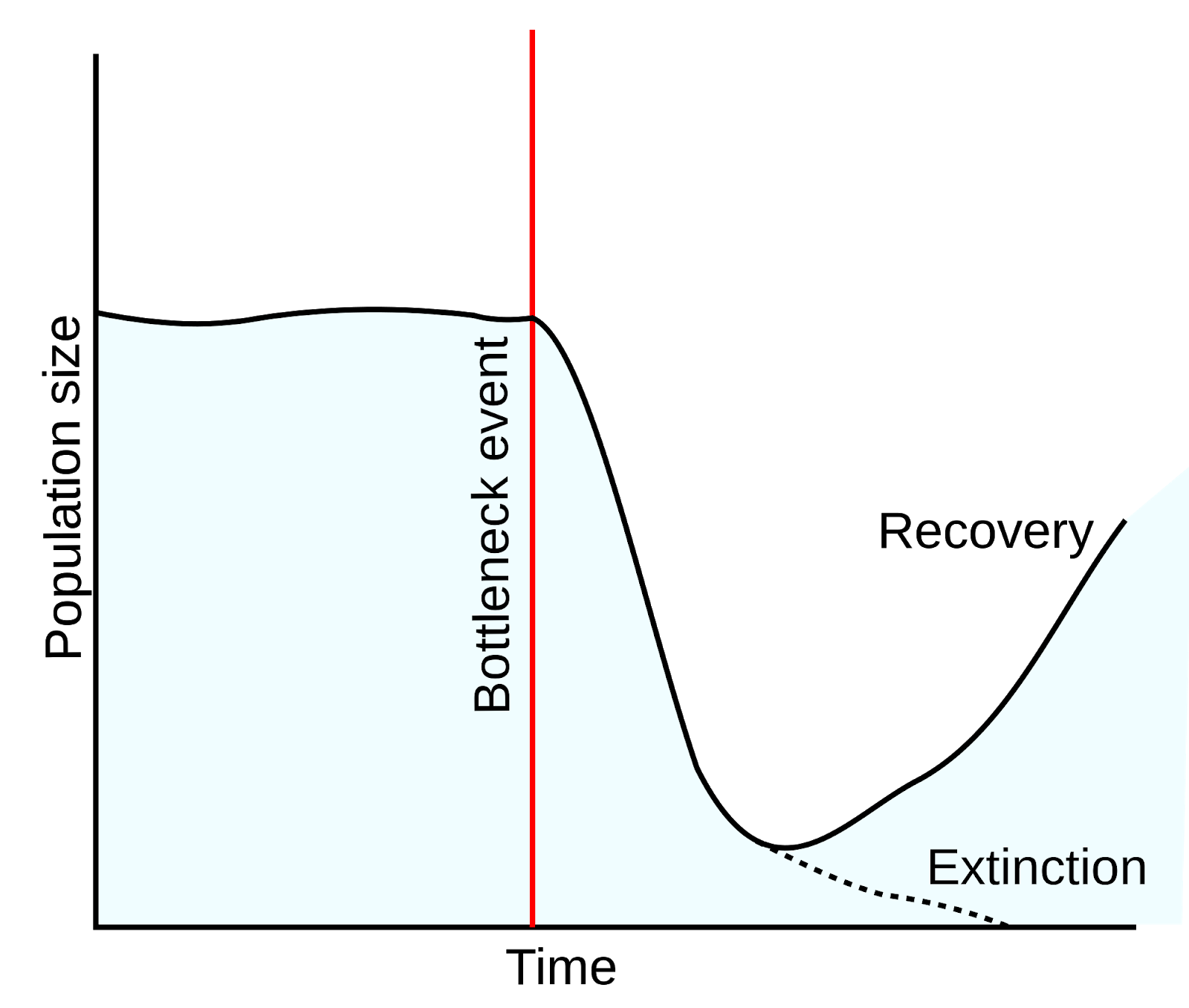
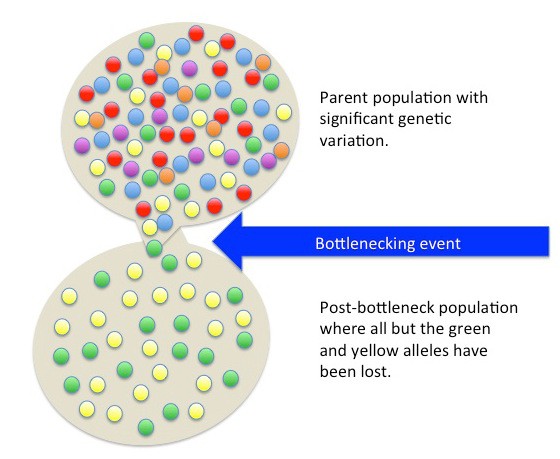
The diagram above illustrates the impact of these processes. Many alleles are lost, and the remaining breeding population passes on the same alleles. This results in a lack of genetic diversity, making genetic diseases present in the population more likely to be inherited.
The Founder Effect occurs when a few individuals from an existing population relocate to an isolated area, leading to the establishment of a new population with a limited gene pool.
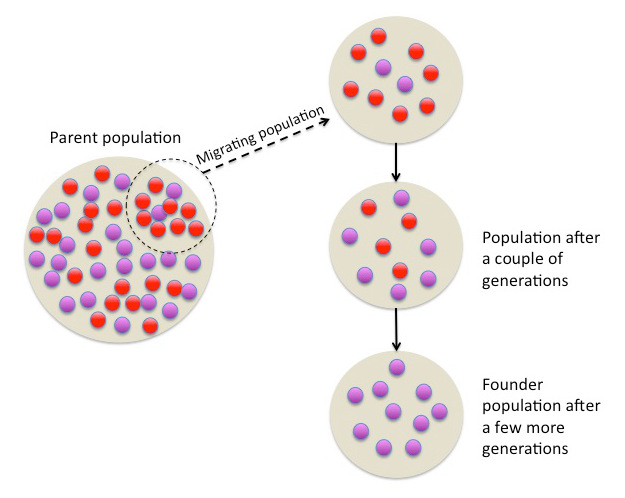
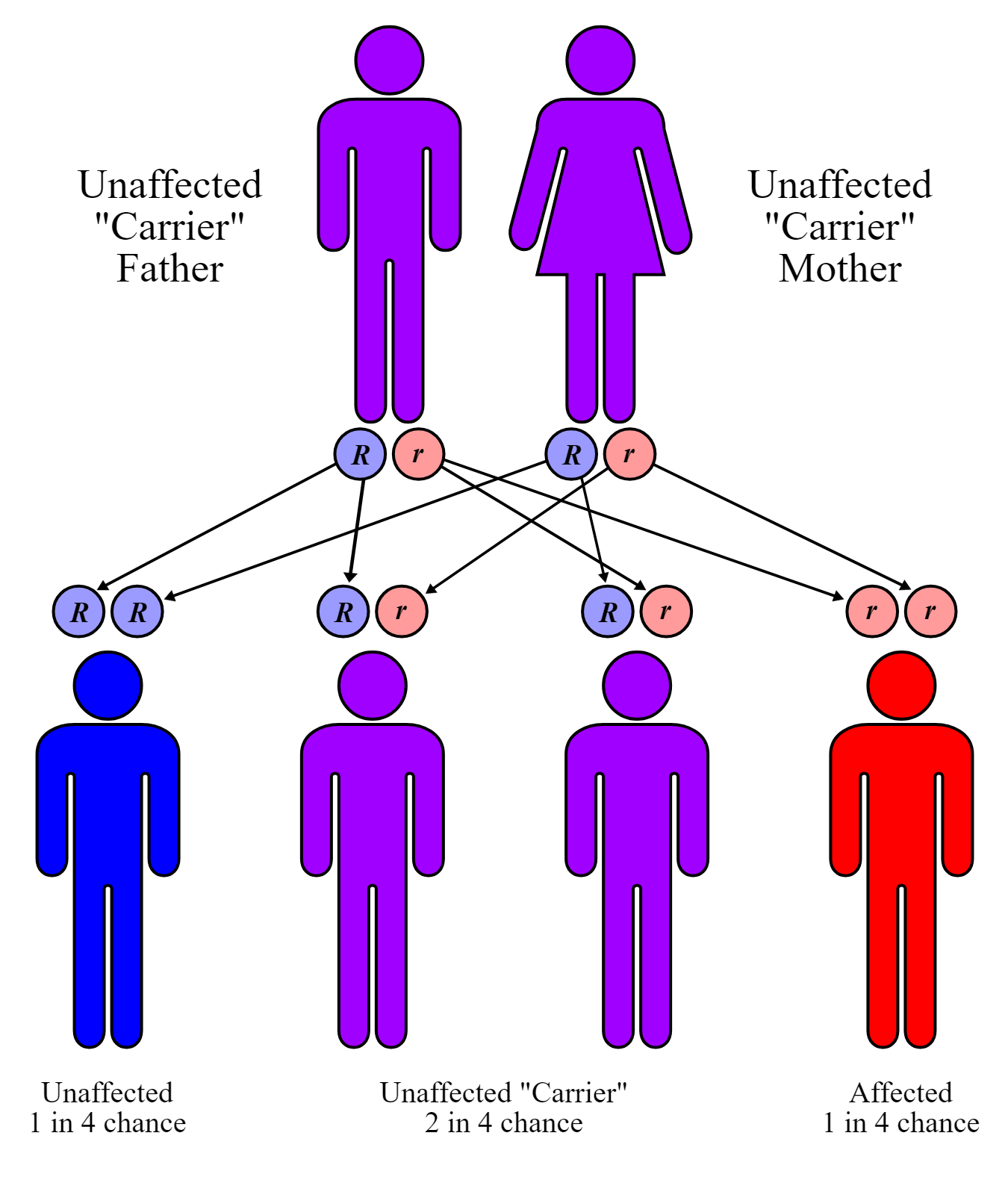
An example of this is The Fugates in Kentucky. There is a rare genetic allele that produces a blue pigment, resulting in blue skin. A small number of individuals in Kentucky isolated themselves, and it happened that they were carriers of this allele. Due to the limited gene pool and number of breeding individuals, this recessive blue allele became widespread, and now many individuals in this human population have blue skin!
- Explain why individuals within a population of a species may show a wide range of variation in phenotype.
- Your answer should include: Differences / DNA / Meiosis / Crossing / Over / Independent / Segregation / Mutations
- Explain why genetic drift is important only in small populations:
- Your answer should include: Rapid / Evolution
- Explain how evolutionary change over a long period of time has resulted in a great diversity of species:
- Speciation

